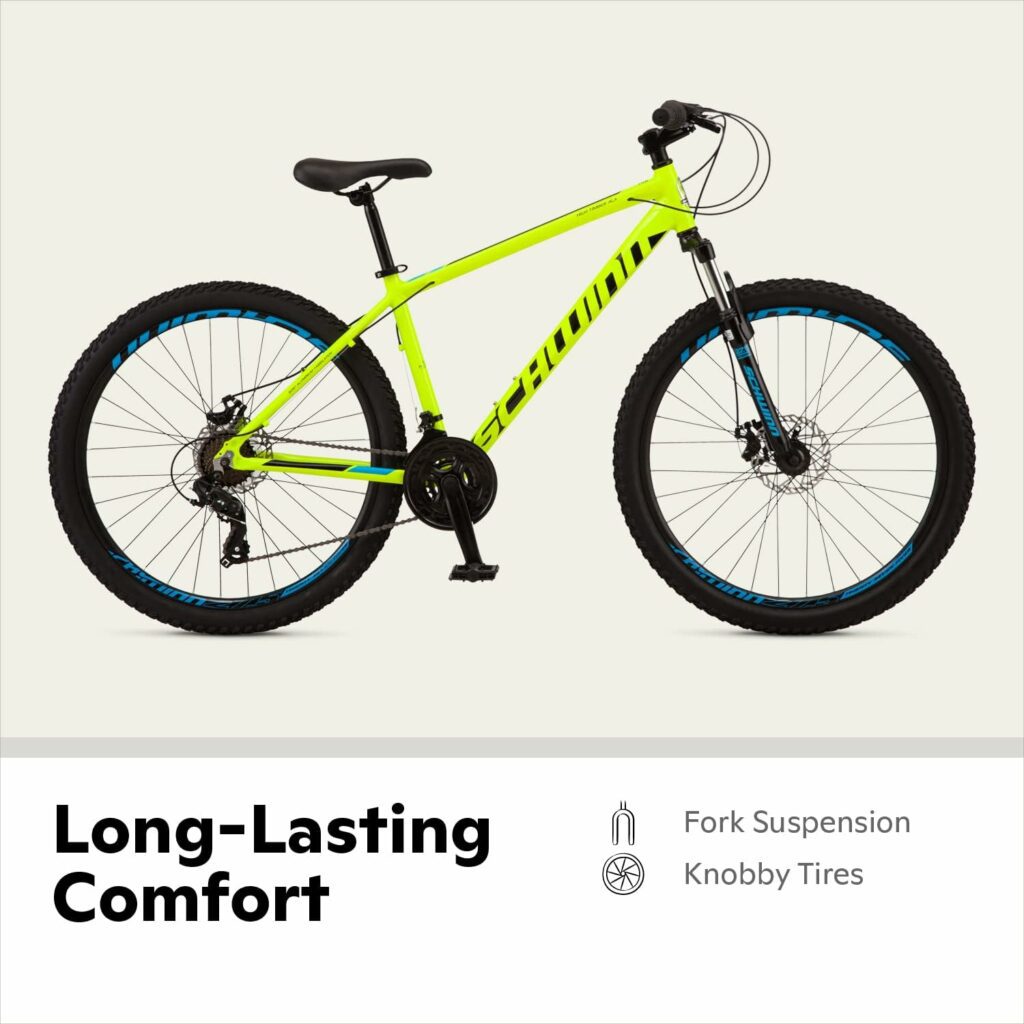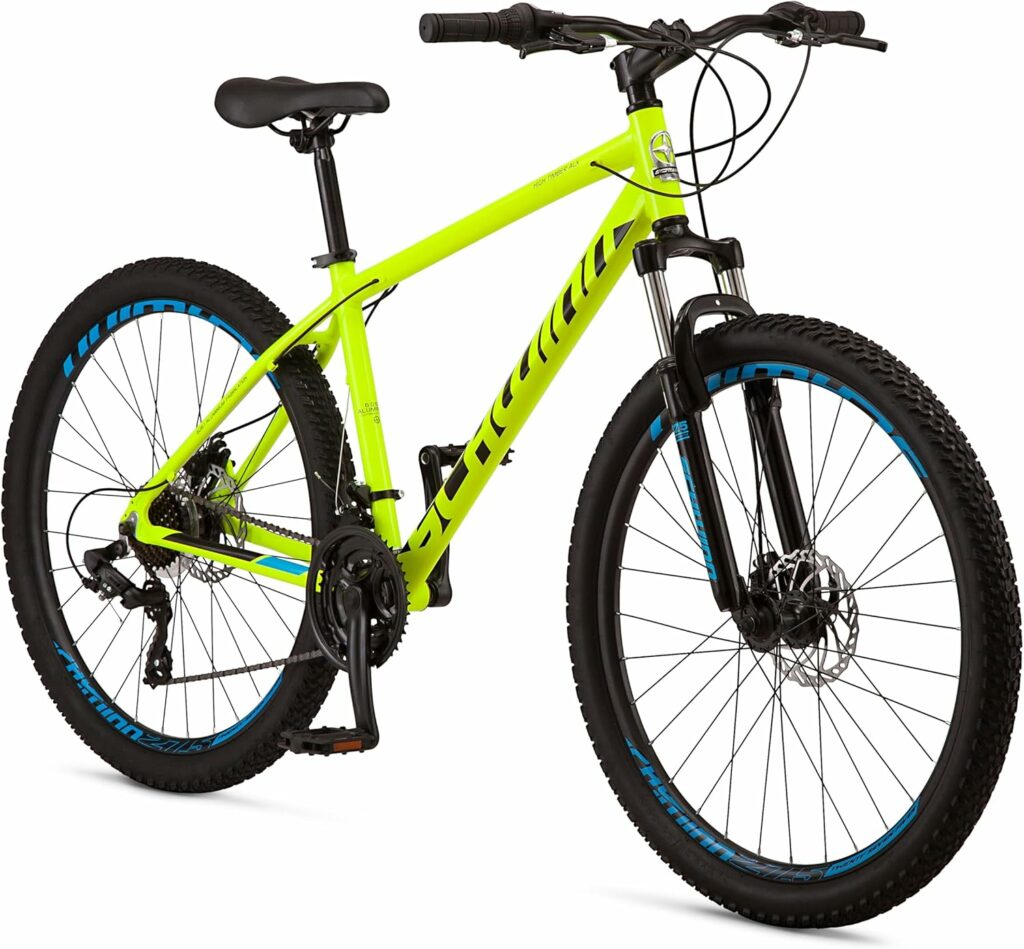Mountain biking is an exhilarating outdoor activity that combines fitness, adventure, and a connection with nature. Whether you’re tackling rugged trails, scaling steep hills, or cruising through scenic backcountry, having the right mountain bike is essential to maximize your enjoyment and performance. With a variety of styles, features, and technologies available, choosing the correct mountain bike can feel overwhelming, especially for beginners. This guide will walk you through the key factors to consider when selecting the perfect mountain bike for your needs.
Understanding the Basics of Mountain Bikes
Mountain bikes are designed for off-road riding, offering durability, stability, and control across diverse terrains. While all mountain bikes share some core features, such as knobby tires, sturdy frames, and suspension systems, they are not one-size-fits-all. Different types of mountain bikes are optimized for specific terrains and riding styles.
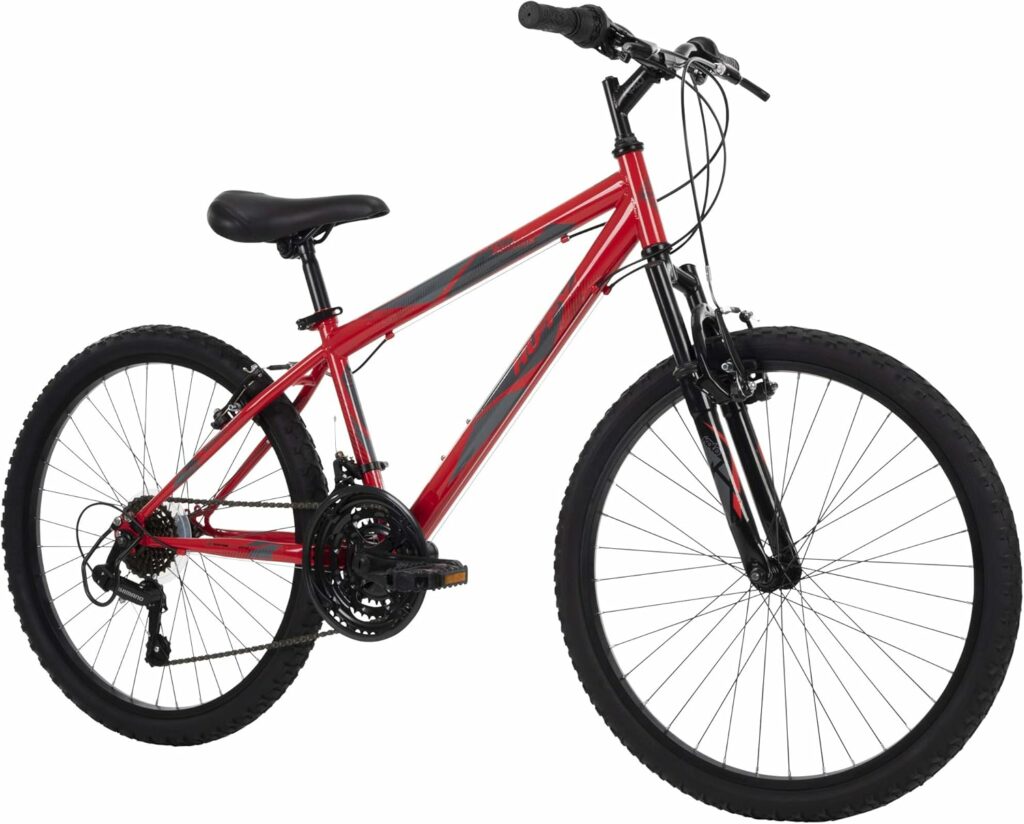
Types of Mountain Bikes
Before diving into specific features, it’s important to identify the type of mountain bike that aligns with your intended use:
1. Cross-Country (XC) Bikes
- Purpose: Designed for speed, efficiency, and long-distance riding on smoother trails or moderate terrain.
- Features: Lightweight frames, shorter suspension travel (80–120mm), and steep geometry for climbing.
- Best For: Riders who prioritize speed, endurance, and fitness over technical trail features.
2. Trail Bikes
- Purpose: The most versatile type of mountain bike, ideal for a mix of climbing and descending on varied terrain.
- Features: Moderate suspension travel (120–150mm), balanced geometry, and durability.
- Best For: Recreational riders who want a do-it-all bike for a variety of trails.
3. Enduro Bikes
- Purpose: Optimized for aggressive descents and technical terrain, with enough climbing capability to get you uphill.
- Features: Longer suspension travel (150–180mm), slack geometry, and robust components.
- Best For: Advanced riders who enjoy challenging downhill runs and technical features.
4. Downhill (DH) Bikes
- Purpose: Built specifically for steep, fast descents and rough trails, often used in bike parks or races.
- Features: Extremely durable frames, long suspension travel (180–200mm), and slack geometry.
- Best For: Riders focused solely on downhill performance, often relying on shuttles or lifts for ascents.
5. Fat Bikes
- Purpose: Equipped with oversized tires for increased traction and stability on sand, snow, or loose terrain.
- Features: Extra-wide tires (4–5 inches), rigid or minimal suspension, and durable frames.
- Best For: Riders exploring soft or unstable terrain, or those seeking a unique riding experience.
6. Electric Mountain Bikes (E-MTBs)
- Purpose: Feature pedal-assist motors for easier climbing and extended rides.
- Features: Integrated motor and battery, suspension systems tailored to handle additional weight.
- Best For: Riders looking to extend their range, climb effortlessly, or ease physical strain.
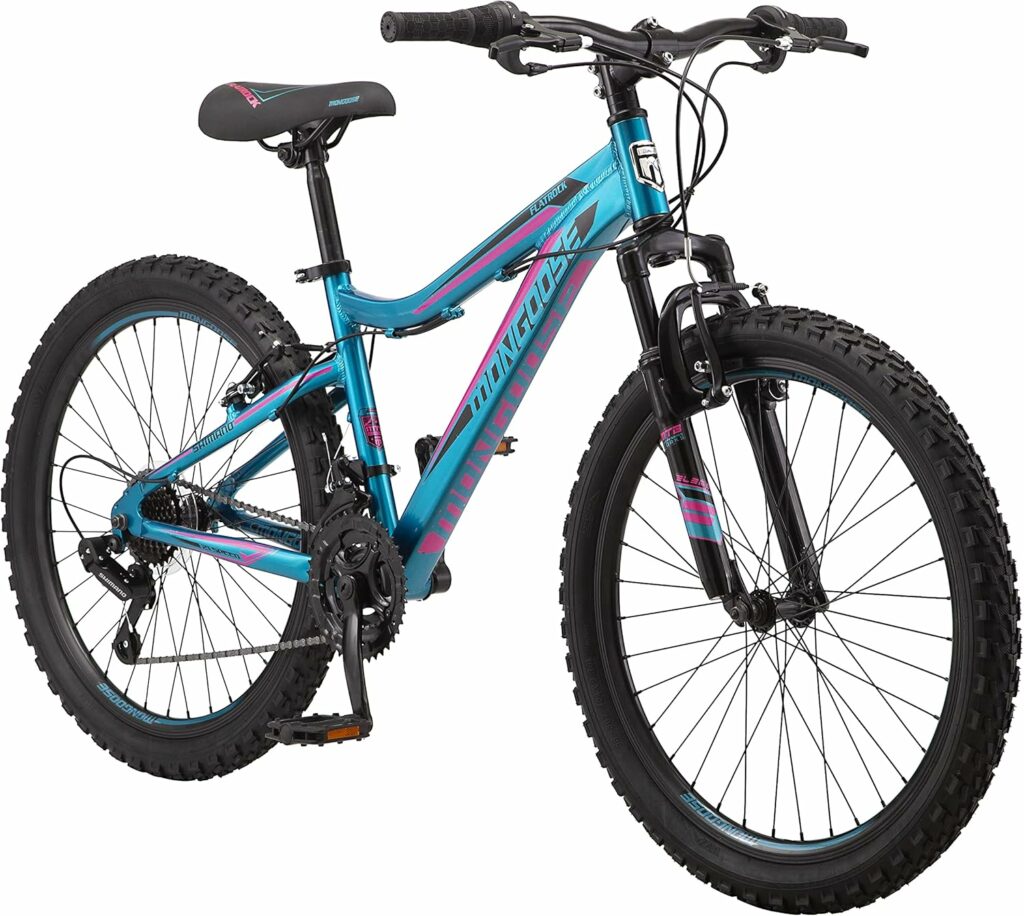
Key Factors to Consider When Choosing a Mountain Bike
Once you’ve identified the type of mountain bike that suits your riding style, you’ll need to evaluate several factors to ensure a proper fit and optimal performance.
1. Determine Your Budget
Mountain bikes vary widely in price, from entry-level models to high-performance machines. Setting a realistic budget will help you narrow your options. Here’s a general breakdown of what you can expect:
- Entry-Level Bikes ($500–$1,500): Suitable for beginners, offering basic components and hardtail frames.
- Mid-Range Bikes ($1,500–$3,000): Feature better suspension, lightweight materials, and reliable components.
- High-End Bikes ($3,000 and above): Advanced suspension systems, carbon fiber frames, and top-tier components for serious riders.
2. Choose the Right Frame Material
The frame is the foundation of any mountain bike. The material affects the bike’s weight, durability, and cost.
- Aluminum: Lightweight, affordable, and widely used in mid-range bikes.
- Carbon Fiber: Lighter and stronger than aluminum but more expensive. Ideal for performance-oriented riders.
- Steel: Durable and comfortable but heavier. Often found in niche or fat bikes.
- Titanium: Lightweight and highly durable, but prohibitively expensive for most riders.
3. Suspension Type
Suspension absorbs shocks and improves control on rough terrain. The type and amount of suspension depend on your riding style:
- Hardtail: Front suspension only, offering simplicity, efficiency, and lower cost. Suitable for cross-country and beginner riders.
- Full Suspension: Both front and rear suspension, providing better comfort and control on technical trails. Ideal for trail, enduro, and downhill bikes.
4. Wheel Size
Mountain bike wheels come in different sizes, each with its own advantages:
- 26-inch: Once the standard, now less common but still used for agility-focused bikes.
- 27.5-inch (650B): Strikes a balance between speed and maneuverability, popular among trail and enduro riders.
- 29-inch (29er): Offers better rolling efficiency, stability, and traction, especially for cross-country and long-distance rides.
- Plus-Size: Wider tires (2.8–3 inches) for added grip and comfort on loose or rough terrain.
5. Gearing
Modern mountain bikes use a 1x (single chainring) or 2x (double chainring) drivetrain system:
- 1x Drivetrains: Simpler, lighter, and easier to maintain, with wide-range cassettes for climbing.
- 2x Drivetrains: Offer more gear options but are heavier and more complex. Consider the terrain you’ll ride—steeper climbs may require a wider gear range.
6. Braking System
Reliable brakes are critical for safety and control:
- Rim Brakes: Rarely used in mountain biking today, as they lack the stopping power of disc brakes.
- Mechanical Disc Brakes: Affordable and effective, but require more maintenance than hydraulic systems.
- Hydraulic Disc Brakes: Offer superior stopping power and modulation, ideal for technical and downhill riding.
7. Bike Fit and Sizing
A properly fitted mountain bike ensures comfort, efficiency, and control. Factors to consider include:
- Frame Size: Determined by your height and inseam measurement. Check the manufacturer’s size chart for guidance.
- Reach and Stack: Measure the horizontal (reach) and vertical (stack) distance to ensure a comfortable riding posture.
- Test Ride: Whenever possible, test ride the bike to confirm it feels right for your body and riding style.
8. Tire Type and Width
Mountain bike tires vary in width and tread pattern to match terrain conditions:
- Narrow Tires (2.0–2.4 inches): Faster rolling, suitable for hard-packed trails.
- Wide Tires (2.5–3.0 inches): Provide better grip and comfort on loose or technical terrain.
- Tubeless Tires: Reduce the risk of punctures and allow lower air pressure for better traction.
9. Additional Features
- Dropper Seatpost: Allows you to adjust saddle height on the fly for better control on descents.
- Frame Geometry: Modern bikes feature slacker head angles for improved stability and handling.
- Internal Cable Routing: Protects cables and offers a cleaner look.
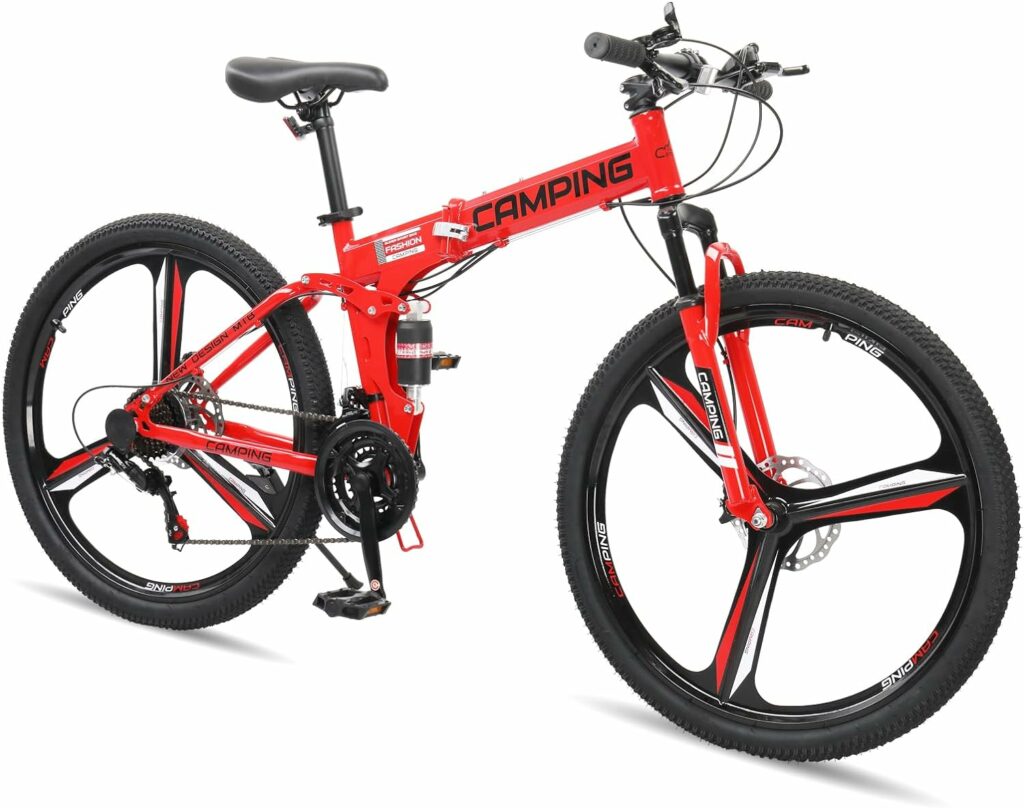
Tips for Beginners
- Start Simple: Choose a hardtail or entry-level full-suspension bike if you’re new to mountain biking. Focus on building skills before investing in advanced features.
- Prioritize Fit: A properly fitted bike is more important than high-end components. Comfort and control should come first.
- Seek Advice: Visit local bike shops or join mountain biking communities to gain insights from experienced riders.
- Think Long-Term: Invest in a bike that allows room for growth as your skills improve.
Conclusion
Choosing the correct mountain bike is a personal journey that depends on your riding goals, terrain preferences, and budget. By understanding the different types of mountain bikes and evaluating key features like suspension, frame material, and wheel size, you can find a bike that perfectly suits your needs. Whether you’re a beginner looking to explore local trails or an experienced rider seeking adrenaline-pumping descents, the right mountain bike will enhance your adventures and open up new possibilities on the trail.
